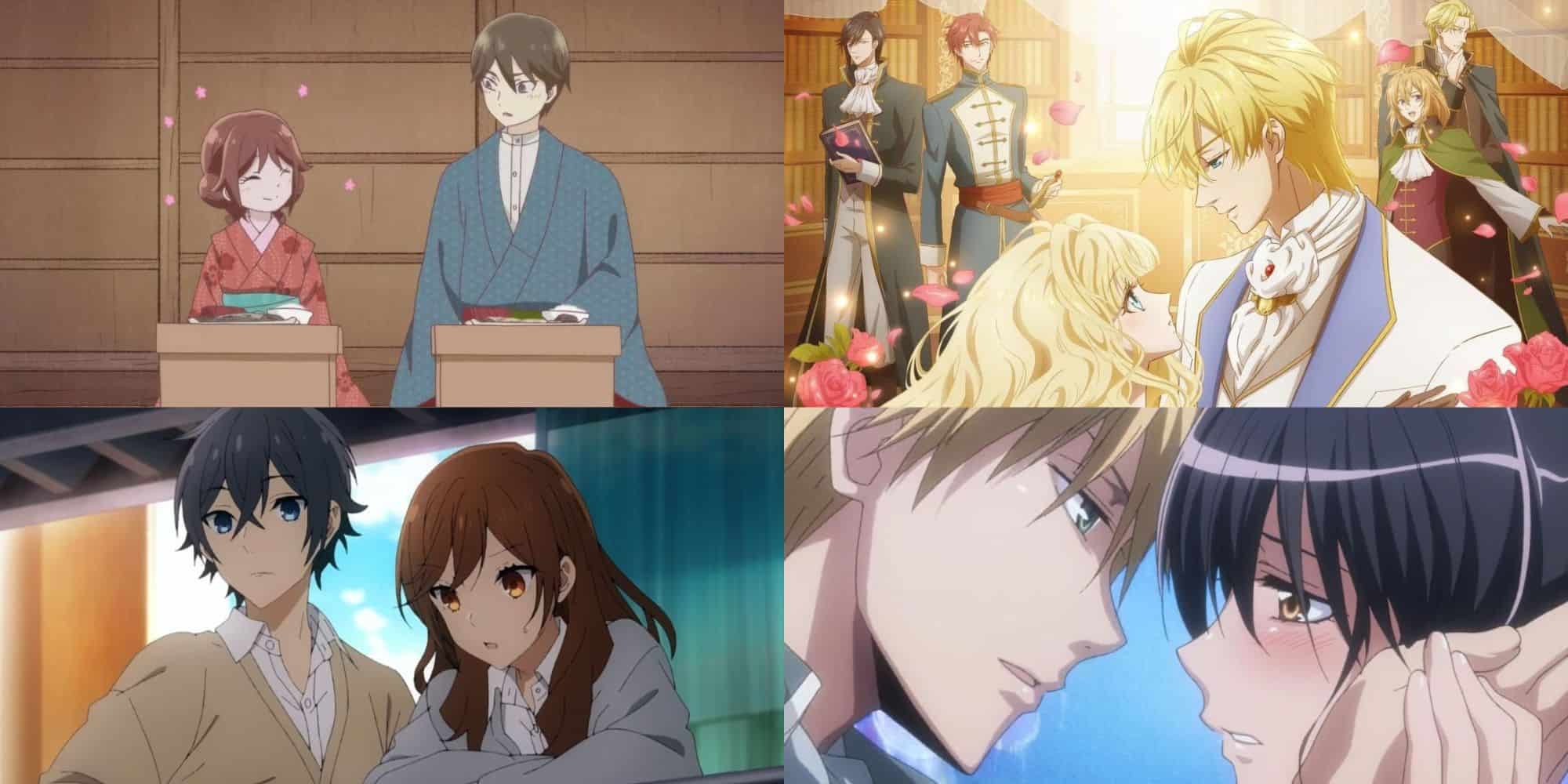If you enjoyed the heartwarming romance and cozy domestic vibes of My Happy Marriage, here are 12 other anime series that capture a similar mood. For more romantic comedy fluff, try Wotakoi: Love is Hard for Otaku. This charming show follows a group of gaming and anime nerds as they navigate office life and relationships. The quirky characters and geeky in-jokes make for plenty of laughs.
If you want something more dramatic but still focused on romance, Your Lie in April is a great pick. The beautiful classical music and emotional storylines will pull at your heartstrings. Just be prepared to shed some tears! For sci-fi romance, head to the stars with Space Dandy. Follow the adventures of an alien hunter across colorful planets and funky space towns. The retro art style and cosmic vibes create a totally far-out viewing experience.
On the more realistic end, Recovery of an MMO Junkie provides a down-to-earth look at online dating and modern adult life. The charming virtual and real-world relationships give the show a heartwarming appeal.
More comedy awaits in shows like Monthly Girls’ Nozaki-kun and Science Fell in Love, So I Tried to Prove It. Both balance laugh-out-loud moments with an underlying sweetness that tugs at the feelings.
If you’re looking for something soothing, try the tranquil fantasy tales of Mushishi. Let the chill atmosphere relax you as you unwind from your day. And for something totally absurd, Pop Team Epic’s rapid-fire skits and nonsense humor make for ideal late-night viewing. Just don’t expect to process much through the delirious laughter.
So whether you’re looking for outrageous comedy, intergalactic adventures, soothing fantasy, or romantic high school hijinks, you’ll find more great shows with My Happy Marriage vibes on this list. Happy viewing!
Romeo x Juliet
The classic tale of star-crossed lovers Romeo x Juliet has been adapted and retold countless times over the centuries in various forms of media. However, one highly unique and fascinating retelling of this legendary story emerged in the late 2000s in the form of the Japanese anime series ‘Romeo x Juliet.’
Produced by Gonzo and first aired in 2007, this anime adaptation transplants the classic tale of the Montagues and Capulets into a richly fantastical steampunk setting. Abandoning the classic renaissance era of Verona, ‘Romeo x Juliet imagines the two families embroiled in conflict in a divided city-state of Neo Verona, with each family controlling their own half separated by a wall.
Amid this divided, war-torn city, young Juliet finds herself falling for a mysterious boy named ‘Romeo.’ However, she is unaware that Romeo is, in fact, the son of the rival Montague family leader.
Their forbidden love blossoms, but all the while, violence continues to plague the streets between their families’ factions. Much like the original play, their love serves as a glimmer of hope, trying desperately to blossom amid the chaos and bloodshed consuming the city around them.
‘Romeo x Juliet’ weaves a visually stunning tale of young love fighting against the tides of fate and family honor in a truly unique reimagining of Shakespeare’s classic masterpiece.
The anime series was praised for its richly detailed steampunk visual style and production values that brought the world of neo-Verona to life. Vivid colors and intricate designs populated the different factions and locations we see.
From Juliet’s Capulet mansion adorned with greenery and ornate decor to the underground slums of the neutral city dwellers shrouded in shadows. Advanced steam-powered technology also blended seamlessly with more traditional sword-wielding warriors and nobility.
Large airships floated over the city alongside the more modernized mag-trains that transported citizens. This punkish blend of low and high-tech aesthetics formed a truly breathtaking backdrop for the unfolding drama between Romeo and Juliet.

Beyond its visual flair, the plot also took notable liberties with the source material to craft new dramatic twists and intrigue. In particular, more context was provided for the strained relationship between the Montagues and Capulets, with the origins of their feud being tied to a mysterious event in the past known as ‘The Night of the Black Sun.’
Political elements were also incorporated to diversify the story beyond just the family rivalry. The neutral city council and influential Prince Essex became involved in attempts to end the confrontation. However, betrayals and resistance on both family sides continuously hamper peace efforts. These new story layers enriched the anime’s interpretation of Verona beyond just focusing on Romeo and Juliet alone.
The characters themselves were also dynamic adaptations that built upon their Shakespearean templates. Romeo, while still retaining his passionate romantic nature, was portrayed as more reserved and troubled by the violence consuming his home. Meanwhile, Juliet exhibited greater agency and intensity compared to past female adaptations. She actively pursued Romeo out of her own will rather than just passively accepting her family’s demands.
Side characters like Benvolio, Lady Montague, and Nurse also received expanded roles that amplified the family drama and consequences of Romeo and Juliet’s love. Even villainous characters like Tybalt were given understandable motivations rather than presented as one-note antagonists.
Taisho Otome Fairy Tale
When it comes to anime centered around fantasy and magic, studios will often turn to European settings like Victorian London. However, one magical girl series chose to tell an enchanting tale set in another era – 1920s Taisho period Japan.
Produced by Brain’s Base and airing between 2013 and 2014, ‘Taisho Otome Fairy Tale’ transported viewers back in time through the eyes of its plucky heroine, Yōko. Absorbing audiences with its charming storytelling and gorgeous Taisho aesthetic, ‘Taisho Otome Fairy Tale’ allowed viewers to step into a bygone romanticized era of Japanese history through the lens of magic and fable.
The story primarily followed Yōko, a spirited young girl who dreamt of adventure beyond her village. After her grandmother passes away, Yōko is shocked to discover she has come into possession of magical abilities – the power to transform objects with paint.
Soon, she becomes embroiled in fantastical missions to track down magical entities known as ‘Yōkai’ disrupting the town, with the mysterious shop owner Tōru acting as her mentor. Meanwhile, Yōko also finds herself drawn to the enigmatic but kind Masked Prince who frequents the village.
Over the course of the series, Yōko blossoms into her new magical role while experiencing the changing Taisho world around her through her travels and encounters. What truly brought the Taisho period to life was the animation studio’s refreshing dedication to historical accuracy in the show’s aesthetic and ambient details.
From the traditional wooden architecture and sliding paper doors of buildings to the antiquated transport like rickshaws and trams, the environment felt wholly authentic to the early 20th-century Japanese countryside and cities depicted.
Character designs emphasized elegant kimonos in vibrant floral patterns and obis wrapped with precision. Backgrounds populated with period foods, technologies, and activities transported viewers straight to 1920s Japan. Even smaller touches like lanterns, calligraphy, and other furnishings offered a rich cultural portrait of the era.
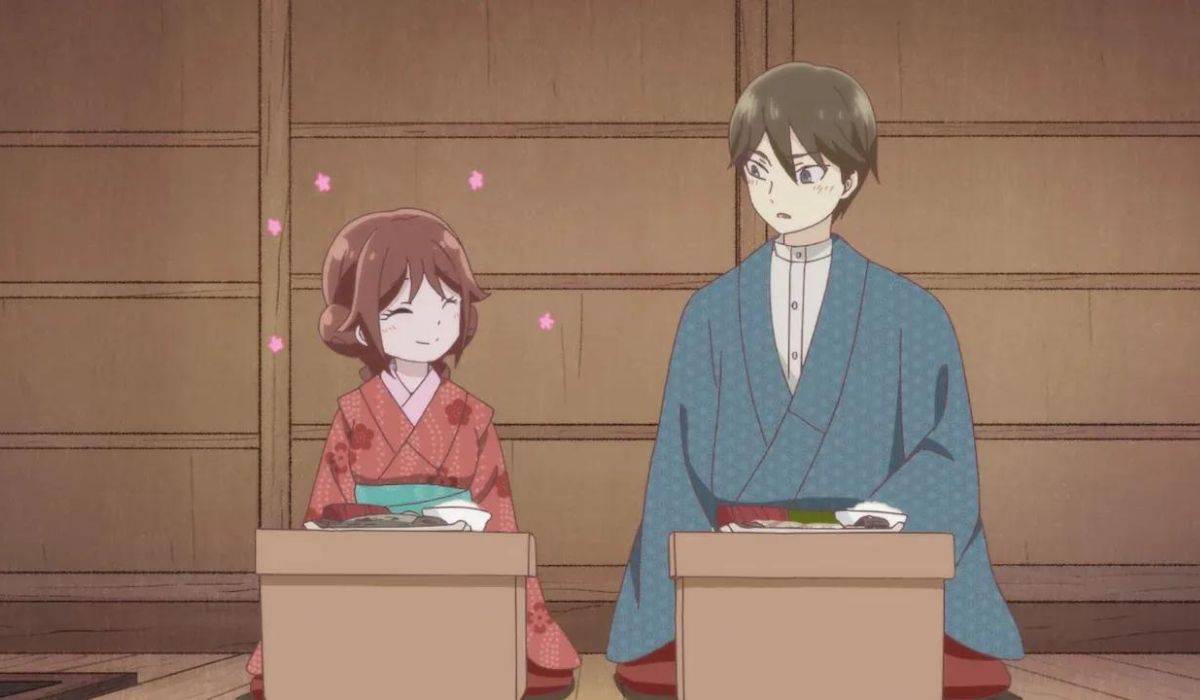
Alongside its lovingly recreated visuals, ‘Taisho Otome Fairy Tale’ also succeeded in capturing the whimsical spirit and societal changes of its setting. Yōko’s adventures with magic allowed the show to comment on topics like modernization, Westernization, and women’s changing roles through a fairytale lens. Episodes explored themes like tradition versus progress, science versus spirituality, and women’s education.
Meanwhile, Yōko herself developed from a curious village girl to a brave adventurer comfortable in both traditional rural and booming urban cultures. The mask prince and magical elements kept the tone lighthearted yet thoughtful.
Character dynamics also enhanced the experience, like Yōko’s caring family of Tōru and her friends. Tōru, in particular, was a fascinating enigma – a loyal ally to Yōko but privately guarding much intrigue and past secrets beneath his gentlemanly facade.
The Masked Prince offered an air of romance and mystery as an important recurring figure in Yōko’s life. Secondary characters brought the village community to life, whether comedic figures or those undergoing their own arcs. Even villains had believable motivations beyond pure evil, reflecting the sociopolitical concerns of the era.
Also Read: My Happy Marriage Manga Ending Explained: Coping with the Tragedy
TONIKAWA: Over The Moon For You
The romantic comedy genre is saturated with countless lighthearted anime about budding young love and relationship hijinks. However, one series subverted expectations by taking its central couple’s romance far more seriously than anticipated – ‘Tonikaku Kawaii,’ also referred to by its English title ‘Fly Me to the Moon.’
Produced by Seven Arcs and airing its single course season in 2020, ‘Tonikaku Kawaii charmed audiences with its refreshingly mature take on romance that balanced hilarity with genuine warmth.
The show centered around Nasa Yuzaki, an ordinary high school boy who saves the life of a mysterious, beautiful girl named Tsukasa. As thanks for his heroic deed, Tsukasa unexpectedly proposes to Nasa on the spot.
To his complete shock and confusion, Nasa accepts not knowing anything about this stranger. They soon move in together as a married couple, with Tsukasa remaining aloof about her strange circumstances and mysterious past. Nasa commits himself to understanding his new wife better while trying to balance homework, married life, and dealing with Tsukasa’s eccentric antics.
What stood out most was how ‘Tonikaku Kawaii’ took its central couple’s marriage genuinely seriously from the very start, treating it with care, respect, and depth rarely seen in the rom-com genre. Despite comedy hijinks, Nasa and Tsukasa skillfully balanced building emotional intimacy through everyday moments together like cooking, cleaning, or conversations.
Their bond evolved organically through sincerely listening to each other rather than meaningless squabbles. While other shows dragged out will-they-won’t-they tension, Nasa and Tsukasa’s comfortable dynamic fast-tracked realistic relationship growth.

Animation also enhanced their heartwarming romance through subtle details. Lingering adoring gazes, gentle, comforting touches, and how they finished each other’s thoughts expressed deep understanding between them.
Smooth, fluid character motions captured emotional comfort just as much as comedic flair. Prominent background music cues amplified intimate pillow talk scenes to feel all the richer. Even mundane moments like holding hands and walking home emitted pure marital affection. Of course, plenty of hilarious hijinks still emerged from Tsukasa’s peculiar quirks and supernatural abilities unknown to Nasa.
Whether she was popping into his bath unannounced or effortlessly defeating martial artists, her curiously anachronistic behavior and inhuman reflexes raised comedic confusion. Meanwhile, Tsukasa found plenty of amusing ways to tease and fluster her ever-patient husband. Their scenarios poked fun at cliches through unpredictable circumstances.
Maid Sama!
Maid Sama! is one of my favorite anime series of all time. I first stumbled across it years ago while browsing anime sites online, and the title and premise immediately caught my interest.
The story follows Misaki Ayuzawa, the strict student council president of a formerly all-boys high school that has recently started admitting female students. To help provide for her family, Misaki works a part-time job as a maid at a maid cafe after school – but of course, she has to keep this a secret from the school to maintain her reputation and authority as student council president.
The series starts off with the school’s most popular boy, Usui Takumi, discovering Misaki’s secret part-time job. At first, you’d expect him to use this knowledge against her, but surprisingly, he becomes intrigued by her dedication to working hard for her family despite her reputation at school. A really fun rivalry and eventual romance develop between these two opposite personalities.
One of the things I love most about Maid Sama! is how it turns a bunch of shojo romance cliches on their head. Misaki is constantly proclaiming how much she hates men and doesn’t need romance – but despite her outward disdain, we get to see the moments when Usui’s kindness cracks through her tough exterior.
Their relationship progresses naturally from constant bickering to mutual understanding and attraction. It feels so much more meaningful than a typical naive shojo heroine instantly falling for a hot guy.

Misaki is such a great female lead – she’s hardworking, smart, athletic, and responsible – basically amazing at everything except being honest with her own feelings. It’s so satisfying seeing her open up and slowly let go of the burden of responsibility she’s carried all her life as she gets closer to Usui. He teaches her that it’s okay to rely on others sometimes.
And Usui is just the perfect romantic lead. He’s handsome, intelligent, kind, competent at everything (including cooking and cleaning!), and endlessly patient and forgiving with Misaki.
He’s basically perfect boyfriend material, but in a way that still feels believable for his character. Unlike a lot of shojo leads, he communicates clearly and directly with Misaki about his feelings for her, which helps push their relationship forward.
Spice and Wolf
Spice and Wolf has become one of my favorite anime series of all time. At first glance, the premise seems a bit unusual – the story follows a traveling merchant named Kraft Lawrence who encounters a pagan wolf deity named Holo.
She appears in the form of a young girl with wolf ears and a tail and strikes a deal with Lawrence to join him as he peddles goods from town to town in exchange for eventually helping her return to her snowy northern homeland.
Despite the unconventional supernatural premise, Spice and Wolf turns out to be a surprisingly down-to-earth and engrossing story of trade, economics, relationship building, and pursuing dreams. What immediately drew me into the series is the sharp wit and verbal sparring between Lawrence and Holo.
They have such great banter and comedic timing that really brings their odd couple relationship to life. Holo loves to tease Lawrence and mess with him, like switching his wheat with rocks as a prank. And Lawrence takes on the straight-man role, often exasperated but patient with Holo’s impish nature.
Their interactions feel fresh and fun – Holo speaks very formally and intellectually as a centuries-old deity, which contrasts nicely with Lawrence’s more casual and modern speech.
The voice actors did such a phenomenal job at delivering the fast-paced dialogue. Another aspect I love is how Spice and Wolf portray economics and trade in such an engaging way.
The show manages to make concepts like arbitrage, leverage, and currency speculation genuinely compelling! I never thought the intricacies of business transactions could make me feel suspense, joy, and heartbreak like this series does.

As Lawrence travels between towns and cities, we get to see how supply, demand, and other factors impact the prices he can get for his goods. He has to balance risks vs. rewards, when to take a deal vs. holding out for more profit, etc. And Holo’s keen wisdom and business instincts from centuries of observing human merchant behavior provide invaluable guidance.
An element that really elevates the series is the evolving relationship between Lawrence and Holo. They start off wary of business partners but slowly build trust and understanding of each other over their travels together.
Holo longs for the simpler rural life she used to know, while Lawrence seeks economic success so he can eventually build his own shop and leave the traveling merchant life.
Bibliophile Princess
Bibliophile Princess is the latest anime based on a light novel series that I’ve absolutely fallen in love with. As an avid reader and bookworm myself, I was instantly drawn in by the concept of a book-loving princess who prefers the company of books over people.
The story follows Princess Elisabeth as she is set to be married off in a political marriage for the benefit of her kingdom. But Elisabeth would much rather curl up in the royal library with a good book than socialize at balls and deal with potential suitors.
When she hears a rumor about a cursed book within her family’s underground rare book collection, her sense of adventure is sparked. Elisabeth sneaks into the rare book collection and ends up bonding with and awakening the demon guardian of the books, Teacher.
He appears in the form of a tall, handsome man with glasses and agrees to help her find the cursed text. But they also quickly discover that books in the collection have started to go missing or become damaged.
What I love about Bibliophile Princess is seeing Elisabeth’s growth from a shy, isolated bookworm to an active protagonist determined to protect the books she loves. With the Teacher’s help, she gains confidence and starts to see the value in building connections with others beyond the pages of a novel.
The budding relationship between Elisabeth and Teacher is also really endearing. There’s a slow-burn romance as the demon who distrusted humans starts to open up the more time he spends with the kind-hearted Elisabeth. Their witty banter and discussions about books draw them closer together.
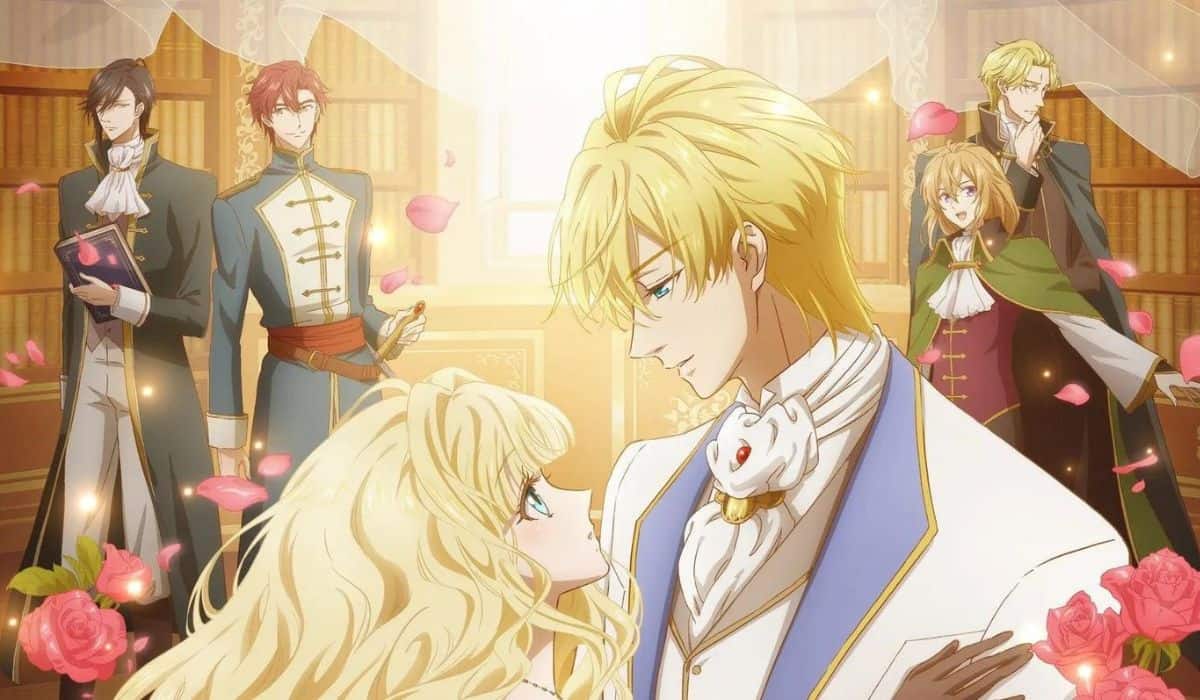
The gorgeous gothic library setting is a book lover’s dream come true. The anime does a wonderful job depicting the grandeur of the literary collection, from the maze-like shelves to the ornate decor. You can really feel Elisabeth’s passion and comfort within the library.
In between the main overarching story, each episode also spotlights various fictional books that Elisabeth and Teacher interact with, bringing the stories to life through vivid animation sequences.
It’s always a joy seeing Elisabeth’s imagination come to life on screen. Some stories are whimsical fairytales, while others are thrilling adventures – the variety keeps things interesting.
I also love how seamlessly the show incorporates literary references, quotes, and wisdom into its script. Elisabeth and Teacher’s conversational book discussions are a treat for any bibliophile to watch.
The writers clearly had just as much fun paying homage to books as the original light novel author. The steampunk-inspired setting provides such an immersive atmosphere.
The clothing, architecture, and technology have a Victorian vibe with fantastical elements woven in. Visually, the anime is just gorgeous, with intricate details that bring the world to life.
Fruits Basket
Cherished for over 20 years, Fruit Basket remains one of the most heartwarming shoujo anime ever made. This beloved series follows kind-hearted teenager Tohru Honda, who discovers a magical secret – the members of the Sohma family she’s living with transform into animals from the Chinese zodiac when hugged.
Their family curse isolates the Sohmas from normal society. But Tohru’s accepting presence helps them confront their pain and reconnect with the world.
Tohru ends up rooming with the mysterious Sohmas after her mother dies, leaving her orphaned. She promises to keep their transforming powers a secret. Living with them tests her resilience, as the Sohma family dynamics prove complex.
The head of the household, Shigure, seems carefree but hides his true feelings behind teasing and flirtation. Yuki, the handsome rat of the zodiac, is worn down by the expectations placed on him. Feisty Kyo harbors self-loathing for being the cat, excluded from the zodiac legend. Though the curse isolates them, the Sohma bonds run deep.
As Tohru interacts with more afflicted Sohmas, she learns how the curse has shaped their lives. Some, like Momiji, put on a cheerful act to hide their sadness at being rejected by their parents.
Others like Hatsuharu struggle to control dual personalities that emerge from their animal spirits. Their stories make the Sohmas sympathetic rather than monstrous.
Tohru comes to understand the burden of their shared fate. Her patience and empathy in response help them open their hearts to possibilities beyond the curse.
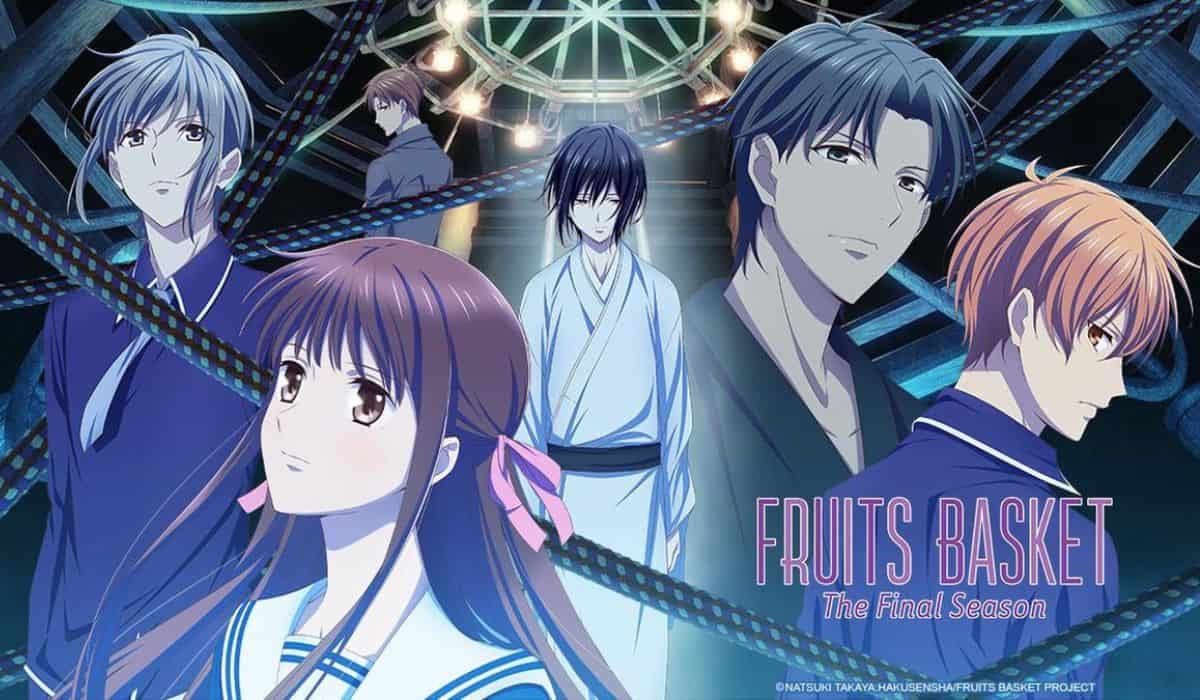
At its core, Fruit Basket is about finding belonging. The Sohmas felt doomed to loneliness, their curse keeping them perpetual outsiders. Supportive Tohru shows them that fate does not define their lives.
Her gentle influence empowers them to confront painful memories and move forward with hope. As they slowly heal, the Sohmas start envisioning a future where the curse no longer traps them. Fruit Basket blends fantastical elements with realistic emotions beautifully.
Of course, Tohru’s relationships with the Sohma boys have shoujo romance flair. Patient Yuki seems like the obvious match for her at first. But temperamental Kyo emerges as the true lead, his prickly defenses hiding vulnerability.
Tohru can see through to his kind heart as she gets past his spiky exterior. As he comes to trust Tohru, Kyo reveals his softer side. Their gradually blossoming connection pays off seasons of pining. Yuki bows out graciously, relieved more by Tohru’s platonic support than romance.
Kimi ni Todoke: From Me to You
Kimi ni Todoke is a heartwarming coming-of-age anime that explores the blossoming romance between two misfit high school students. Sawako Kuronuma is nicknamed “Sadako” by her classmates because of her ghostly appearance – long black hair, pale skin, and quiet demeanor.
Her resemblance to the famous horror movie character scares her peers away. Underneath her creepy facade, though, Sawako is a sweet girl who only wants to make friends. Fate intervenes when the popular Shota Kazehaya begins talking to her.
As the two get closer, they gradually open up to each other about their insecurities. Sawako admits her loneliness and desire to be more sociable, while Kazehaya shares his hidden fragility behind being everyone’s “prince.”
Their interactions are touching because neither can believe someone as admired as Kazehaya or as feared as Sadako would want to talk to them. The series excels at portraying teenage vulnerability and the courage it takes to reach out across social divides.
In the beginning, Sawako’s reputation makes their relationship seem impossible. Rumors spread fast when Kazehaya says hi to her in class. Sawako is encouraged by finally having a friend, not realizing his kindness signifies a deeper crush.
Other girls who hoped to get Kazehaya’s attention are outraged that he chooses to spend time with “Creepy Sadako.” But he persists in bringing Sawako out of her shell, helping her talk to their classmates, and showing her that not everyone judges her unfairly.
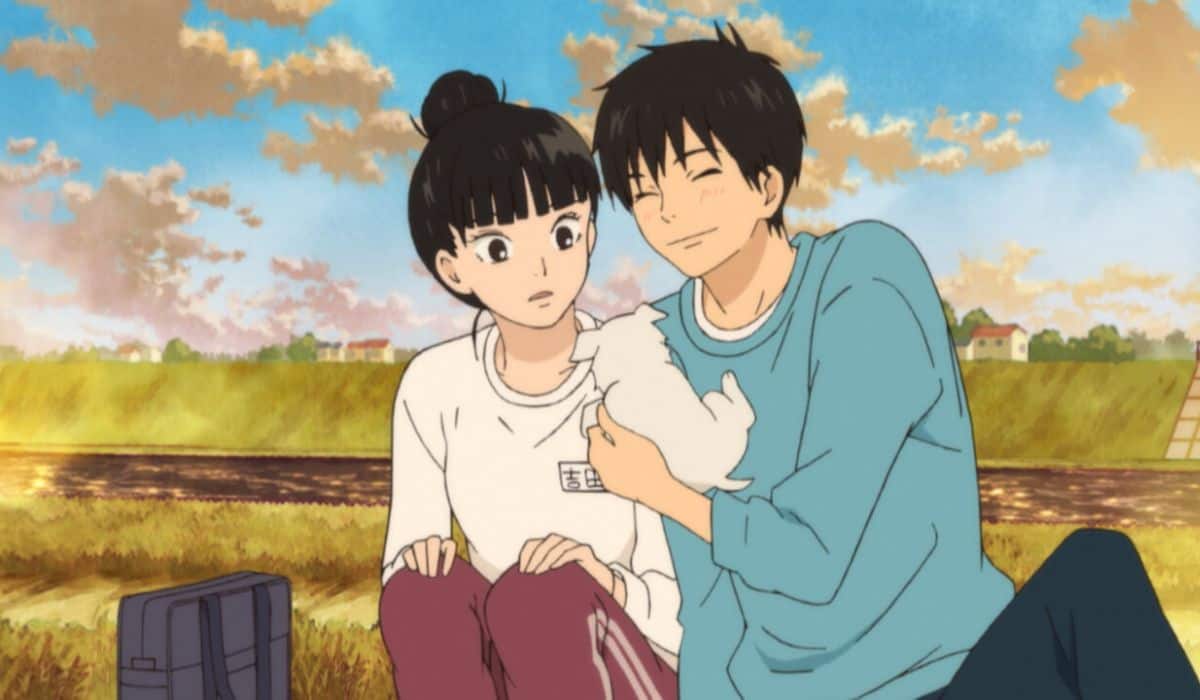
Sawako’s social struggles and isolation feel painfully relatable. Everyone assumed the worst of her based on her ghostly vibe. She did have trouble reading social cues and communicating clearly. But instead of writing her off as strange, Kazehaya approaches her with patience and compassion.
He coaxes her into joining school clubs and talking to people who were once afraid of her. As Sawako becomes more confident, her sweetness emerges.
Soon, her quirks come across as endearing instead of creepy. Kazehaya’s loyal friendship empowers her to make an effort to connect, gradually turning doubters into friends.
Of course, the path of young love never runs smoothly. Misunderstandings and gossip threaten to separate our leads. When Sawako’s new friend, Yano, shows interest in Kazehaya, tensions rise in the friend group.
The drama feels down to earth because it stems from the characters’ relatable insecurities. Sawako doubts that someone as popular as Kazehaya could genuinely like her. So, she lacks the confidence to convey her true feelings, scared of jeopardizing their friendship.
Violet Evergarden
Violet Evergarden is one of those anime that just reaches into your heart and squeezes it tightly. I’ll admit I was a bit hesitant to start watching it at first.
The poster made it seem like it might be a saccharine slice-of-life show, all beautiful animation but little substance. Boy, was I wrong! This show delivered an incredibly poignant and emotional story that had me crying almost every episode.
The animation and art style are simply gorgeous. Kyoto Animation really flexed their skills with this one. The backgrounds are fantastically detailed, making the world feel alive and lush. And the way they animate faces and eyes to convey emotion is just remarkable.
During intense scenes, you can see clearly what the characters are feeling through subtle facial expressions and body language. Major props to the animators for creating such expressive characters!
And let’s talk about the characters – they are all so well-written! Violet steals the show, of course. Her journey from an emotionless soldier to an empathetic young woman was beautiful and tragically heartbreaking to watch.
You see her struggling to understand concepts like love and friendship that seem so basic to us after a life of only knowing orders and war. She starts off mechanical but becomes more human as she opens her heart to those around her.
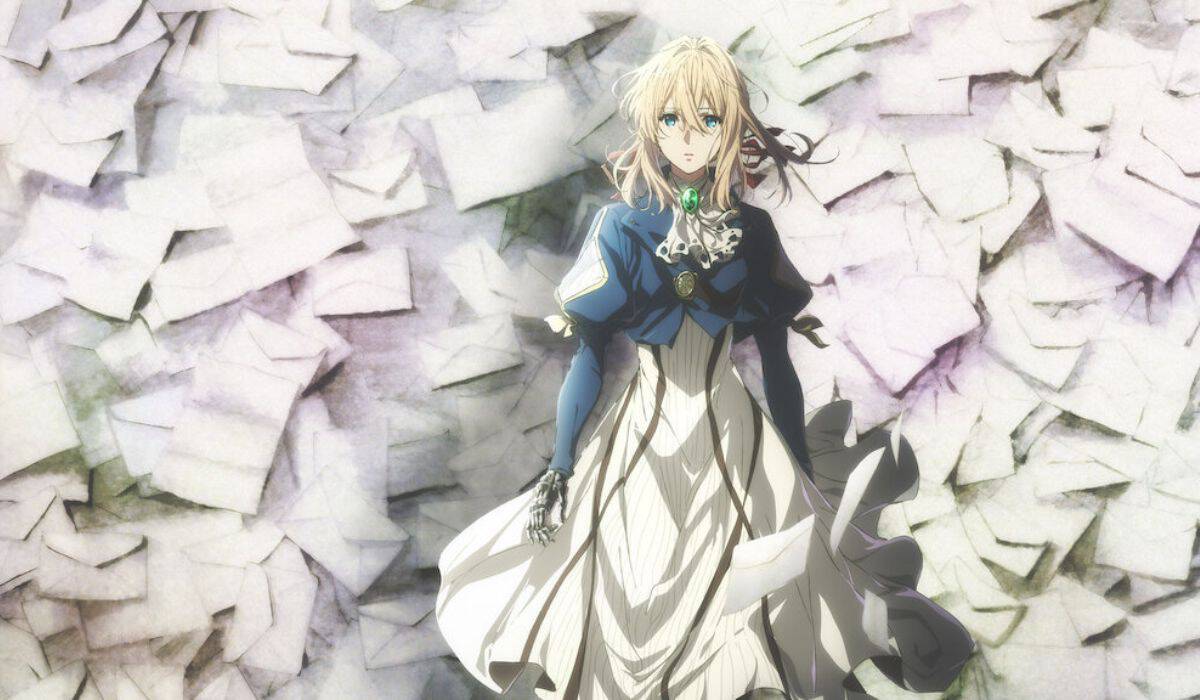
The supporting characters like Claudia and Gilbert also add so much depth. We get glimpses into how the war impacted everyone, not just Violet. Each ‘auto memory doll’ client Violet assists tells a unique story about loss or grief.
The characters feel like real people dealing with trauma and hardship. Even side characters get fully realized development.
The music also perfectly complements each scene. The soundtrack ranges from somber and melancholic during emotional moments to lovely and hopeful during uplifting scenes. The delicate piano and string arrangements are simply divine. And the intro and outro songs capture the feeling of loneliness turning into hope. The music makes the events even more hard-hitting.
Kamisama Kiss
Where are my shoujo romance fans? Get ready for me to gush about Kamisama Kiss, an absolutely adorable supernatural love story that deserves more hype! This anime has everything – comedy, drama, great characters, and a romantic pairing that hits all the right notes.
Kamisama Kiss follows high school girl Nanami, who becomes a deity after a man gives her his shrine. She has to take over his responsibilities of listening to people’s prayers and giving advice. Oh, and the shrine comes with a grumpy familiar named Tomoe, who at first hates serving a human girl as his new master.
But of course, he starts to warm up to her over time as they help various supernatural beings who visit the shrine with their problems. And despite their bickering, Nanami and Tomoe soon find they were made for each other.
Their relationship is just too cute! The anime has some great comedic moments, especially with Nanami adjusting to her new supernatural life. She’s very much a normal teen, so seeing her take on deity training makes for good laughs. Tomoe plays the straight man and is constantly annoyed by his new mistress’ hijinks. Their banter is so entertaining!
But Kamisama Kiss also tugged at my heartstrings a lot. Nanami’s backstory of being abandoned by her parents and having to work to survive is sad. You can’t help rooting for this strong, kind girl who keeps pressing forward despite loneliness.
Seeing her find a new family in Tomoe and the people at the shrine is touching. The romance progresses naturally, too – Tomoe starts cold, but you slowly see his walls come down.
Their intimacy grows by supporting each other through hardships. And the way Tomoe becomes so caring and protective of Nanami is just beautiful character growth. Their intimate moments had me smiling like an idiot!

Kamisama Kiss explores a lot of meaningful themes like finding family, believing in oneself, and learning to trust again after loss. Nanami and Tomoe both help heal what’s missing in each other. The blend of humor and drama was very balanced.
I also have to praise the amazing animation style! The supernatural elements like spirits and magic were brought to life gorgeously. The pastel color palette is so pleasing and lets the characters’ emotions shine through. You can feel the passion the animators put into this.
And I can’t forget the exhilarating soundtrack! The musically talented cast sings energetic opening and ending songs that capture the spirit of the show. The instrumental background music heightened both the lighthearted and serious moments.
Kamisama Kiss is a must-see for shoujo fans but also anyone who loves supernatural romance. It has the perfect recipe – lovable characters, comedy and drama, heartwarming themes, and relationships that pull you in. The story left me fully satisfied, too, with a conclusive ending.
Also Read: Top 10 Anime With 12 Episodes Easy Binges For Your Day
The Angel Next Door Spoils Me Rotten
The Angel Next Door Spoils Me Rotten is a Japanese anime based on the light novel series of the same name written by Saekisan. The anime adaptation premiered in January 2022 and has quickly become a fan favorite for its comedic moments paired with heartfelt life lessons.
The story follows high school student Amane Mahiru, who lives next door to a young girl named Amane Yua. Despite her very young appearance, Yua is actually an angel in training sent down to Earth to learn how to guide and assist humans.
Due to a slip-up, Yua ends up contracting with Mahiru to be his guardian angel. From that point on, she vows to spoil and dote on him as her master. Aside from the two main characters of Mahiru and Yua, the anime also introduces their friends and classmates.
There’s Mahiru’s best friend, Tachibana Kyoichi, their upperclassman Sasaki Lilith, and Yua’s angelic mentor, Kuroha. Each character contributes their own brand of humor and perspective to this funny yet feel-good anime.
A major draw of The Angel Next Door lies in its balance between laugh-out-loud comedy and thoughtful life lessons. Yua’s childlike innocence, paired with her immense angelic powers, leads to many hilarious mishaps.
For instance, when she tries to heal Mahiru’s scraped knee, she ends up boosting his physical abilities to superhuman levels temporarily. This results in Mahiru accidentally destroying the school’s tennis court, thanks to his enhanced strength.

At the same time, Yua’s inexperience as an angel-in-training often requires Mahiru’s guidance. Through their time together, he teaches her important lessons about being human, such as learning empathy, patience, and understanding emotions. In turn, Yua’s optimistic approach to even mundane daily experiences helps Mahiru appreciate life’s small joys.
While the anime offers funny gags and comedic fantasy action, it’s also filled with heartwarming slice-of-life scenes.
We get to see Mahiru and Yua’s daily school life, interactions with friends, and small precious moments like walking home together while chatting. These mundane yet endearing scenes are elevated by the chemistry between the two leads.
Also Read: Top 12 Must-Watch Anime from Ufotable
Horimiya
Horimiya is a Japanese anime based on the manga series by HERO and Daisuke Hagiwara. It premiered in January 2021 and quickly became a hit for its down-to-earth portrayal of teen romance and refreshing take on high school life.
The story follows Miyamura Izumi, an ordinary and unassuming high school student. At school, he wears glasses and keeps to himself. But unbeknownst to his classmates, Miyamura hides another side of himself outside of school, where he has multiple piercings and tattoos.
One day, Miyamura’s popular classmate, Hori Kyoko, meets Miyamura outside of school. To his surprise, she is very different from her perfect class president image, dressing casually and displaying a rowdy personality.
From this fateful encounter, Miyamura and Hori slowly become friends and learn more about each other’s hidden sides. Aside from the two leads, Horimiya also features a cast of lovable supporting characters. There’s Tooru Ishikawa, Hori’s protective little brother, and Sengoku Kouichi, Miyamura’s guy best friend.
Fans also love female side characters like Yuki Yoshikawa, Hori, and Miyamura’s airheaded friend who provides comic relief. Each character adds warmth and humor to this relatable high school story. What makes Horimiya stand out is its true-to-life depiction of high school experiences.
Small moments like Miyamura and Hori awkwardly exchanging contact info or meeting each other’s friends ring very true. Horimiya understands the little details of how youthful relationships gradually develop through everyday interactions.

The anime also deftly balances comedy with sensitive issues teenagers face. For example, it touchingly explores how Hori shoulders the responsibility of caring for her younger brother due to her working parents.
On the other hand, Sengoku’s flashy playboy antics provide some over-the-top hilarity. By blending humor with insight, Horimiya makes its coming-of-age story very accessible. At the heart of Horimiya’s appeal are its two endearing protagonists.
Miyamura’s subtle metamorphosis from a stiff loner to Hori’s reliable confidante makes him very sympathetic. Meanwhile, Hori’s lively personality hides her problems juggling school and family life. Together, they find solace and support in each other’s friendship.
Miyamura and Hori’s natural chemistry also makes their budding relationship believable and sweet. There are no huge dramatic confessions but rather mutual understanding built on everyday interactions.
Whether it’s walking home together or chatting over ice cream, their romantic development feels organic. Aside from its down-to-earth romance, Horimiya also crafts thoughtful character arcs surrounding Miyamura and Hori’s personal struggles.
Hori learns to rely more on her friends instead of always placing the burden on herself. On his end, Miyamura overcomes his social anxiety and makes deeper connections beyond just Hori.
Also Read: 13 Most Challenging Anime To Watch That You Should Know

